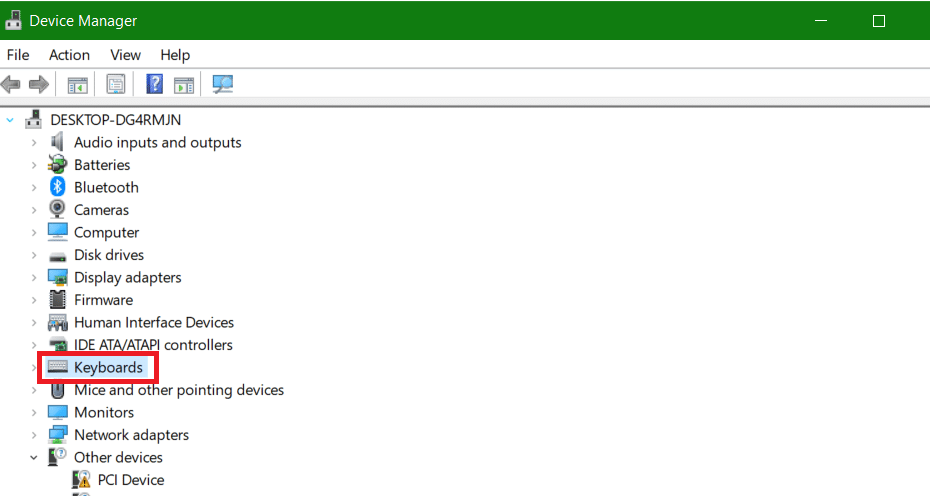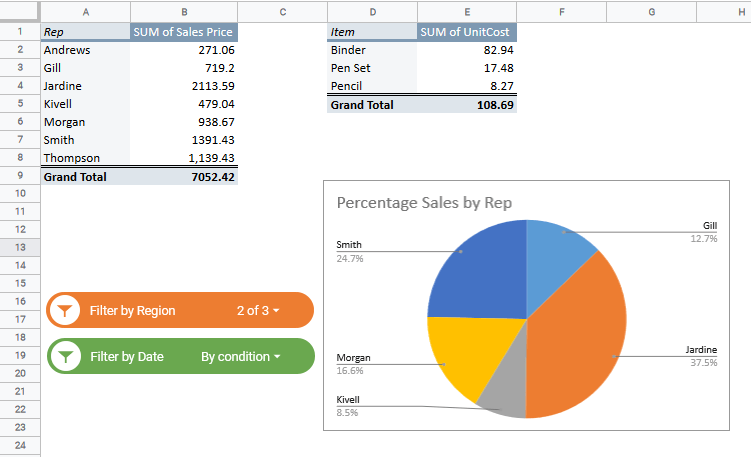If you’re here because you’ve noticed that moving your mouse a certain way causes you to miss buttons or misclick on random things, you’re in the right place. When your cursor doesn’t end up where you want it to, you might find that your mouse sensitivity or Mac mouse acceleration might be the culprit.
Mouse acceleration can be helpful for some, but for others, it is the bane of their existence. Magic Mouse 2 acceleration — or acceleration on any mouse, for that matter — can get really frustrating for some Mac users.
In this guide, we’ll talk about what mouse acceleration is and why you may want to disable it. Then, of course, we’ll discuss how to disable mouse acceleration on Mac and what steps you can take to troubleshoot if nothing works. Let’s get started!
This Article Covers:
What is Mouse Acceleration?
Mouse acceleration, also dubbed “mouse accel” by some, is not inherently a bad thing. In fact, most people who use a Mac may never even come to know about this feature. But what exactly is it?
Your operating system (or your mouse’s drivers and proprietary software) is typically responsible for how your cursor responds to you moving your mouse. Generally, you may expect that moving your mouse an inch from left to right will also move your cursor across your screen in the exact same distance and manner.
Mouse acceleration goes on top of the above-expected mouse movement. It’s a setting that can activate only when you move your cursor past certain boundaries or above a specific speed. Its effect is moving your cursor faster and further than it normally would, hence the term “acceleration.”
Why Do People Disable Mouse Acceleration?
Mouse acceleration can be helpful in some situations. This feature’s main purpose is to allow you to cover more ground with your cursor without moving your mouse much physically. Some people may actually grow to like this feature, while others need it due to physical limitations that make it challenging to physically move a mouse over larger distances.
So why would anyone turn off mouse acceleration on Mac?
There are situations when mouse acceleration can simply be too frustrating to deal with. One of the best examples is in gaming — if you’re trying to use small mouse movements to aim your shot in a first-person shooter, a quick flick of the wrist can instantly cause you to miss. Similarly, many people dislike mouse acceleration simply because it can cause problems when they’re trying to do small, sensitive movements with their mice.
If you don’t find that this feature affects your daily use, you may not need to remove mouse acceleration on Mac at all. However, if you find that you do want to remove it for certain cases (i.e. during gaming), you can find some methods to temporarily disable it below.
How to Turn Off Mac Mouse Acceleration
If you really want to remove mouse acceleration on Mac, there are a few different ways to do it. You may need to do a bit of trial and error to find a way that works for you, especially considering there are some methods below that may not work for your version of macOS. However, we’ve done all the legwork to find the best methods on Mac to disable mouse acceleration. You can see them below:
Method 1: Use the Command Line via Terminal
One of the quickest and easiest ways to disable mouse accel on Mac is by entering a command via Terminal. Here’s how:
- Open Terminal. You can do this by pressing Command (⌘) + Space, then typing Terminal and pressing enter. Alternatively, you can click on the magnifying glass located in the top right corner of your menu bar, type Terminal in the search box, and press enter. Your Terminal will appear as below:

- Depending on your macOS version, you can type the code below and press enter.
defaults write -g com.apple.mouse.scaling -1 (for any macOS below Big Sur)
defaults write -g com.apple.mouse.scaling -integer -1(for macOS Big Sur or later)
- Once you’ve entered the above command in your Terminal and pressed enter, you will need to log out and back in to activate the change.
Turning mouse accel back on is as simple as typing the same command above but changing the number value from -1 to anything from 0 to 3.
Despite how easy this method may seem, it isn’t always the best. Many report problems with the command not working at all, while others report that it causes their mouse to become too slow to use. Others say that restarting their Mac re-enables acceleration, as well.
You may notice that your mouse acceleration setting will also directly correlate with the tracking speed bar in your Mouse’s preferences (within System Preferences > Mouse), as seen below:

In this Apple Support thread, you’ll find that the only setting that can adjust your mouse acceleration also directly affects your mouse’s tracking speed. In the screenshot below, you’ll see how the tracking speed settings translate into mouse acceleration or scaling.

Therefore, if you turn off mouse acceleration but want your mouse to move at a certain speed, adjusting your tracking speed will also inadvertently turn the mouse accel back on.
If this method is giving you trouble, you may want to try one of the options below, instead.
Method 2: Use a Third Party App
As with many functions on Mac machines, third-party apps are often the best way to go. In this case, using an app like LinearMouse (free, open-source) allows you to turn mouse acceleration on individually for your mouse and trackpad.

LinearMouse is easy to download and install, although you will need to give it permission to access your Accessibility preferences, as below:

Once you are in the app itself, you can change various behaviors for your mouse and trackpad, including scrolling, buttons, pointer, and modifier keys.
Another option you can try is SteelSeries’s ExactMouse Tool, which is also free to use.
Method 3: Use a Mouse with Proprietary Software
One of the things you can do is lower your tracking speed via System Preferences > Mouse > Tracking speed to the first to third tick and then use a mouse with proprietary software to handle all other settings. For some reason, many users have observed that lowering tracking speed makes mouse accel far less egregious and annoying in actual use. Here’s how to lower your tracking speed:
- Open System Preferences, then click on Mouse. Note that you must have a mouse connected (via any method) to get settings to show up.
- Simply click and drag the notch to whichever tick you prefer, as below:

Once you’ve lowered your tracking speed in your preferences, install your mouse’s proprietary software and adjust your sensitivity and other mouse behaviors there.
A mouse we’d suggest is the SteelSeries Prime Wireless, which has a USB-C dongle and proprietary software, so you won’t have to deal with the pesky native mouse acceleration anymore.

You can click here to buy the SteelSeries Prime Wireless mouse. You can also choose a different mouse, as long as it has its own driver. Note that you may want to avoid Bluetooth mice as some may cause problems with mouse accel.
Bonus Tips
Now that we’ve talked about how to turn off mouse acceleration on Mac, we have some bonus tips that might come in handy below:
How to Check if You Have macOS Mouse Acceleration
Generally, most operating systems have mouse acceleration turned on by default — including both Mac and Windows. However, if you’d like to check if yours is on (such as in the case that you bought your Mac second-hand or refurbished), you can follow the quick guide below:
- Open Terminal.

- The next step is to type the following command (and press enter):
defaults read -g com.apple.mouse.scaling
You can copy and paste this command into your Terminal by using command+c and command+v.
Entering this command will return a number, as seen below. If it shows you anything other than -1, mouse acceleration is on for your Mac machine. Note that this command can show you differing values from -1 going up to 3.

What to Do if Nothing Works
If you’ve tried everything on this guide but found that nothing works, what do you do? Before you start closing all your apps and calling it quits, consider checking the mouse itself. If you are using a Bluetooth mouse, you may want to see if you can try a wireless (2.4G) or wired mouse to see if any of the methods above work.
This Reddit thread appropriately titled “New to Mac: mouse acceleration is driving me crazy” talks about how the original poster (OP) tried everything they could possibly think of to no avail. The OP was using a Logitech mouse connected via Bluetooth to their Mac, and no matter what they did, they couldn’t fix the mouse acceleration issue they were experiencing.
What ended up working for them, however, is trying to use their mouse with a wireless 2.4G USB dongle rather than with Bluetooth. Coupled with one of the techniques above, this may give the desired result.
Frequently Asked Questions
How do I increase mouse acceleration on Mac?
Currently, there seems to be a direct connection between your mouse acceleration setting and the mouse tracking slider located in System Preferences > Mouse > Tracking speed. Therefore, to increase your mouse acceleration, you can simply adjust your tracking speed natively through your System Preferences.
Does the Mac trackpad have mouse acceleration?
Yes, it does. Note that changing your mouse acceleration settings in Terminal via the command line can also affect your trackpad’s general feel. If you would like to alter your mouse acceleration but keep your trackpad behaving the same way as it is now (or vice versa), your best bet would be to use an app like LinearMouse, which has recently added “per device” settings.
How do I know if I have mouse acceleration?
To check your mouse acceleration on Mac, follow the steps below:
- Open Terminal. The easiest way is by using Command (⌘) + Space to open Spotlight and search for Terminal there.
- Type the command defaults read -g com.apple.mouse.scaling and press enter. If the resulting number is anything other than -1, mouse acceleration is on.
How do I get my Mac mouse to feel like Windows?
Unfortunately, there is no simple way to disable mouse acceleration on Mac machines to make them feel like Windows computers. However, you may try one of the methods above to see whether they may work for you.
Conclusion
Mac mouse acceleration is a bit of an odd issue. Many Mac users lament its existence and the fact that Apple makes it so difficult to disable or change its settings. On the flip side, there are also tons of Mac users who may never even know that mouse acceleration exists or who may know but simply don’t care as the setting doesn’t bother them in the slightest. Either way, it’s a good idea to know how to turn off mouse acceleration on Mac just in case you ever need to!
New to Mac? Here’s a list of some of the Best Mac Apps to get you started.
Related:
- Top 5 Best MacBook Air Alternatives
- How to Change a MacBook Name in 4 Simple Steps
- Best Mouse For MacBook Pro and MacBook Air [Top 5]
- Top 19 Best Mac Apps to Install for Productivity, Entertainment, & More
- How to Close Apps on MacBook: All 4 Methods Step-by-Step
- How to Uninstall Apps on a Mac (6 Easy Methods)






